Taking stock of the past three months’ worth of Chevrons and Diamonds articles, it is easy to discern a few emerging content trends that reflect the types of artifacts that are continually being added to our collection. In that span of time, three separate Chevrons and Diamonds articles have documented some of our recent acquisitions of noteworthy scorecards or programs originating from rather historic service team games that were played during World War II. Just as most parents can’t choose a favorite among their own children, none of the scorecards, programs or scorebooks within our collection receives such prized status, though there are some genuine stand-outs among the pack.
Collecting historic baseball military ephemera is far more rewarding than similar pieces from the professional game (or, at least that is our admittedly biased opinion). In terms of scarcity or rarity of items, those that were distributed at a major league game are of the most common by comparison to items distributed at a wartime service league or exhibition game. During the 1940s major league ballparks had seating capacities that ranged from the mid-30,000s in the smaller markets to 57,000 for the crown jewel of the big leagues, Yankee Stadium. One would have to assume that scorecards and programs printed for each game numbered in the range 30-50% of the capacity for each game, if not more. By WWII, teams employed the practice of limiting printing runs to a handful of editions throughout the season (changing only the actual scoresheets and specific rosters pages inside the booklets to reflect the current visitors and lineups). Despite these production factors, the sheer numbers of those individual-game scorecards that were printed increase the odds of having more surviving pieces to collect. In contrast, the pieces printed for a military game would number in the hundreds at best, resulting in far fewer surviving examples.
Survivability of military baseball ephemera (just as with those from the professional game) can vary dependent upon a few factors such as paper quality, modes of transporting the pieces home or just general handling (folding or being stuffed into a pocket). There is a notable difference in the quality of paper used by professional teams and the very rudimentary medium used to produce the service team pieces, especially for those printed in the overseas theaters. Due to these factors, the surviving military items are far outnumbered by their wartime major and minor league counterparts. Locating and acquiring a military scorecard, scorebook or program in excellent or better condition is next to impossible solely based on the the aforementioned factors.
Scarcity due to production, handling, transportation and storage are only part of the story to consider. Recognizing that as the last of the World War II veterans are passing, their heirs are often saddled with determining the disposition of the accumulation more than 70 years since their family member returned from the war. To the untrained eye, a piece of military baseball ephemera might appear to be nothing more than smelly old paper falling victim to a quick purge during a home clean-out and subsequently ending up in the trash. Those pieces that escape all of these situations and make their way into collections (such as ours) or to a museum are exceedingly scarce.
For the select few collectors of baseball militaria, items from notable games don’t typically slip past our watchful eyes undetected very often which is not to suggest that it never happens. However, when it does occur, the sheer joy of being the one to land such a piece with minimal (or without) competition from other collectors means that the acquisition costs are minimized. What determines the notability of a service team game and subsequently impacts the rarity (and collector-value) of military baseball scorecards?

During World War II, many significant service team games (or series) were played and were well-documented in the press by sportswriters (for domestic games) and war correspondents (for overseas games). Contests such as the 1943 exhibition game played between a combined team of Yankees and Indians (coached by Babe Ruth) versus the Navy Pre-Flight (UNC Chapel Hill) “Cloudbusters” or the 1944 Army versus Navy Championship series in the Hawaiian Islands have garnered significant attention both at the time of the games and, more recently, over the last decade. Scorecards from these games tend to surface on occasion though not nearly as much as their major league counterparts.
In more than a decade of researching, collecting and observing the baseball militaria market, we have been diligent in documenting and tracking artifacts (such as scorecards) that are listed for sale (or at auction) along with monitoring the corresponding pricing trends. During that period of observation, we have seen only three examples (two of which we acqired) of the scorecard (shown at right) originating from the 1945 Third Army Championship series played in Nuremberg, Germany. The August 11-13, 1945 (originally scheduled from August 7-9) series amounted to a preliminary play-off round in the run up to the overall championship of the European Theater of Operations (ETO) and pitted the “Onaways” of the 76th Infantry Division against the “Red Circlers” of the 71st Infantry Division (see: Authenticating a Military Championship Baseball and Third Army – Baseball Championship Series). Led by the dominant pitching performance of former Cincinnati Reds phenom Ewell Blackwell, the Red Circlers eliminated the Onaways in five games.

Next up for the Third Army Champion-71st Infantry Division “Red Circlers” was the US Army Ground Forces Championship Series against the 7th Army Champion “Blue and Grays” of the 29th Infantry Division. This best of five games-series was played in both Nuremberg and Manheim, Germany with the ‘Circlers’ starting pitchers Ewell Blackwell and Bill Ayres dominating the opposing batters. The 71st swept the 29th in three straight to advance to the ETO World Series. While we have yet to uncover a scorecard or program, a significant group of photographs and other associated documents (along with a 7th Army Championship medal) originating from one of the 29th’s pitchers, former minor league pitcher, Earl Ghelf surfaced in early 2018 (see: Metal Championship: Two 7th Army Victors of the 29th Division and European Theater Baseball: the 29th Infantry Division Blue and Grays at Nurnberg for more details) which we were able to secure.
Baseball in Occupied Europe
In the weeks following the collapse and unconditional surrender of the Third Reich, U.S. Army leadership was successful in assembling one of the largest known baseball leagues featuring more than 200,000 soldiers and airmen filling rosters of bases and units stationed throughout the occupied European Theater. The autumn-1945 GI World Series was the culmination of the season-long competition throughout the continent with teams that consisted of regular soldiers playing alongside former minor and major leaguers, all of whom fought and served in the war in theater. By season’s end, some of the teams who made it to the lower level championships (such as the Seventh and Third Army series) had morphed, absorbing the top talent from their vanquished opponents within their leagues (for example, former Chicago White Sox infielder-turned-combat-medic Don Kolloway served in the 69th Infantry during the war and played for unit’s team before being tapped to join the 29th’s team after being defeated in the 7th Army Championships) as their commanders attempted to improve the odds of winning the championship for their unit.
Having eliminated the 76th ID’s Onaways and Blue and Grays of the 29th ID, the Red Circlers found themselves facing off against the The Advance Section, Communications Zone (ADSEC/COMZ) All-Stars based at Oise, France. This formidable opponent was led by a non-commissioned officer (who was a former major league pitcher), was unconventional with their roster. Named the Oise All-Stars, this group fought their way into the semi-final series that pitted them against the 66th Infantry Division and the 71st Infantry Division; three teams fighting for the two spots in the ETO World Series. This semi-final was a double-elimination contest of three games; the first of which was played on August 30 (71st Infantry Division versus Oise All-Stars) and a double-header on September 1 (71st Infantry Division versus 66th Infantry Division and Oise All-Stars versus 66th infantry Division). The 66th division was eliminated after sustaining losses to the 71st and Oise leaving the victors to advance to the GI World Series.
According to Gary Bedingfield, a military baseball historian and founder of Baseball In Wartime, there are a few questions surrounding the name of the Oise team. Bedingfield wrote in his Baseball in Wartime Newsletter Vol 7 No 39 September/October 2015, “Reims became the site of the U.S. Army’s redeployment camps, all of which were named after American cities. There were 18 of these “tented cities” scattered throughout the Reims area. This area was designated the Oise (pronounced “waz”) Intermediate Section by the U.S. Army, named after the local river and the Oise département, a French administrative division that covered much of the area.”

The OISE All Stars baseball team was assembled by former Brooklyn Dodgers pitcher, Sergeant Sam Nahem and featured a roster populated predominantly with former semi-pro, collegiate and minor leaguers. Only one Oise player, other than Nahem, played at the major league level. Going against unwritten rules (both in professional baseball and in the armed forces), Nahem insisted on adding two former Negro Leaguers to his roster. Willard Brown and Leon Day, undoubtedly ruffling some feathers in the Army establishment. Aside from the unique composition of Nahem’s roster, the team’s name has been the source of confusion. As Bedingfield wrote, “A strange myth has appeared over the years – that I, myself, have used at one time or another – that Oise stood for Overseas Invasion Service Expedition. I can find absolutely no evidence to support this and maintain that the Oise All-Stars were named for the Oise Intermediate Section. Other Sections in France included the Loire Base Section and the Seine Base Section, home of the formidable Seine Base Clowns, a ball team operated by Pacific Coast Leaguer pitcher Chuck Eisenmann.”
The GI World Series was a five-game affair with games one, two and five being played in Soldiers Field at Nuremberg Stadium and the “road” games (three and four) being played at the (long-ago demolished) Headquarters Command (HQ) Athletic Field in Reims. Nahem’s Oise All-Stars were evenly matched with the “Red Circlers” of the 71st which resulted in a great series for the fans to witness.
- Game 1 (September 2, 1945 | Soldiers’ Field): Oise All-Stars 2 – 71st Infantry Division 9
- Game 2 (September 3, 1945 | Soldiers’ Field): Oise 2 – 71st ID 1
- Game 3 (September 6, 1945 | HQ Command Athletic Field): 71st ID 1 – Oise 2
- Game 4 (September 7, 1945 | HQ Command Athletic Field): 71st ID 5 – Oise 0
- Game 5 (September 8, 1945 | Soldiers’ Field): Oise 2 – 71st ID 1
The specifics of each game and the men who filled the rosters are laid out in great detail in Bedingfield’s September/October 2015 newsletter.
Until just a few months ago, the only scorecard that we have seen is one that was used for the two games played at the Oise All-Stars home field, Headquarters Command Athletic Field in Reims. Unfortunately, no copies of this piece have surfaced to the collector market in more than a decade of our searching. The piece (shown above) bears similarities to the hand-illustrated piece used at the 1945 Navy World Series in Hawaii. Regardless of any and all searching and maintaining watchful eyes on the market, nothing from the GI World Series has become available; not even the HQ Command Athletic Field scorecard.
A few months ago, one of our online auction searches that seldom produces results that are worthy of deeper investigation, finally listed an item that caught our attention. A strange title that read, “WWII GI Scorebook Nurnberg Field USFET W1945 Unused Baseball,” with an accompanying-yet-tiny image (that was barely discernible) was enough to prevent me from performing my routine action of deleting the results. Upon opening the link and viewing the photos of the item, we were still unsure of what was listed. Very clearly, the piece shown was a service team baseball scorecard that was printed on the typical low-grade paper that was commonly employed for this purpose in all wartime theaters but the printed information wasn’t registering as we inspected each associated image. For some reason (perhaps due the lack of documented examples), the most obvious information printed across the cover didn’t immediately stand out. The interior pages featured blank scoresheets that were devoid of commonly seen team rosters or game line-ups which offered no further clues. Returning to view the lead image in the auction listing, something finally clicked and the reality surrounding this piece suddenly materialized. For the first time in more than ten years, a scorecard from the GI World Series had finally come to market.
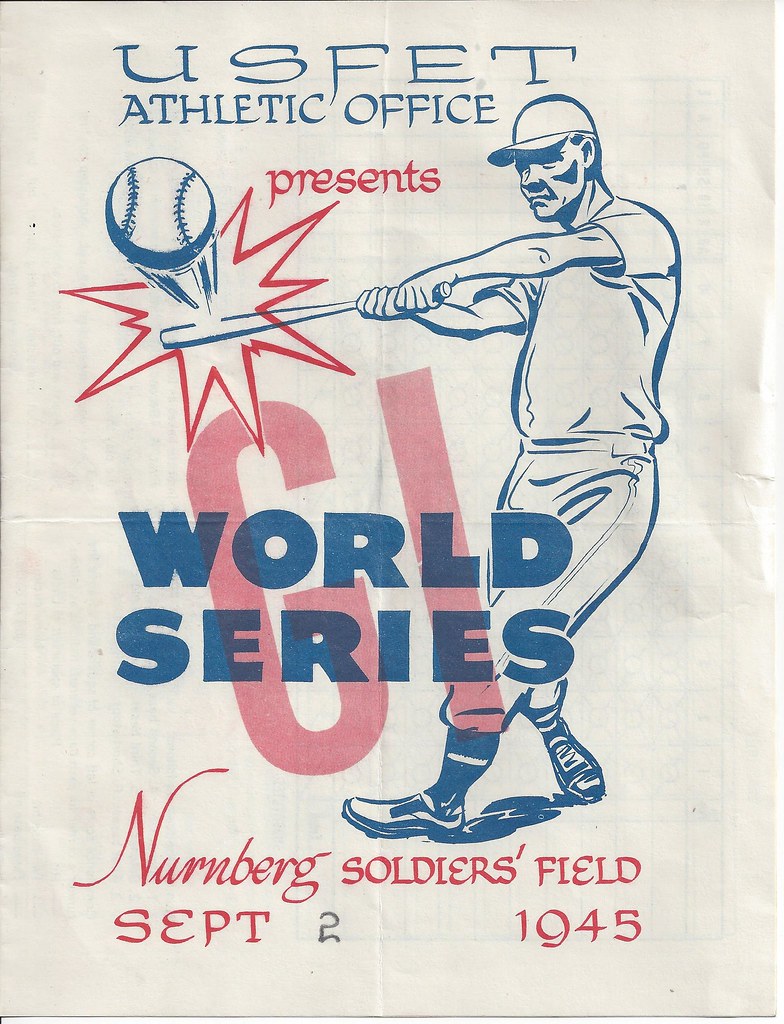
With only two days remaining until the auction’s close, there was a lone bid which was incredibly low for such an important piece of baseball history.The seller’s starting price was merely $7.00. Not knowing the experience level of the bidder that I was hoping to wrest the scorecard away from left me wondering if his maximum price was in the sphere of reality as to the value of the scorecard. Noting the other bidder had a feedback count of less than two hundred, we coupled that with the behavior of early bidding (perhaps one of the most common mistakes made by inexperienced bidders) and decided that we would prepare a sniped bid and hope that it was enough to supplant the competition. Anxiously awaiting the auction’s close and the bad news that we were going to miss out on this piece due to its rarity and collector value, the congratulatory email regarding our bid arrived along with the invoice for payment. Our surprise at winning the auction was immediately surpassed by the sale price: $10.50 which was just $3.50 above the listed price and, $0.50 greater than the competing bid (maximum)! The seller listed the shipping price as $4.06 which was a bit lower than what we typically encounter with these items but it wasn’t so low to cause any sort of concern…until it actually became a concern.

Note: In prefacing the next sequence of events, please understand that this article was not written admonish or to chastise the seller. Sharing details regarding all aspects of the transaction is done so with the hope that our readers consider what transpired as they engage in their own selling activities (we have omitted the seller’s name and altered the listing title to preserve their anonymity).
After more than two weeks since submitting payment for the scorecard, the seller still hadn’t updated the listing with any shipping details (it was still marked as not being shipped) and was completely silent with regards to communication, an inquiry was dispatched through the auction provider’s messaging system. The brief response from the seller, “No tracking number. Mailed with a stamp which is why I gave you a partial refund,” was a little strange since I hadn’t asked for anything more than a status and a tracking number. The partial refund from the seller was $0.50 causing further confusion for us.

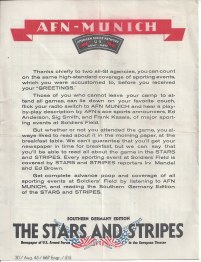
A few days following the seller’s strange message and partial refund, the letter carrier delivered the package containing the scorecard with $0.45 postage due. True to his message, the seller did exactly as was stated; the piece was stuffed into a thin and appropriately-sized paper envelope with a $0.55 Forever stamp affixed. There was no padding, backing boards or anything to protect the piece from moisture damage, inadvertent folding or from harm inflicted by postal sorting machinery which left this priceless artifact almost entirely exposed. Without purchasing postal insurance, there was no tracking. The envelope did receive damage (possibly from the sorting equipment) that tore and creased the envelope. Concern for the scorecard itself was put to rest once it was determined that the piece suffered only curling without being creased. In desiring to pass along the information regarding the arrival of the package, the condition and the additional postage that was paid to receive the envelope, we reached out to the seller. Rather than to address the concerns, the seller responded, “I will give you a full refund instead of the partial refund already provided,” closing out this intriguing saga (which included a fantastic result).
Our intention was to merely point out the issue and hope that subsequent shipments are better protected and postage is properly funded rather than to receive a refund. In the end, we received this incredible artifact without cost. Perhaps we should consider this a gift? Moving on, we were able to press the curl out of the scorecard and add it to the growing collection of baseball militaria paper.
The significance of the GI World Series scorecard (from the Nuremberg-hosted games) lies within the covers. The artwork and the two-color (red and blue) printing (the silver date appears to be applied subsequent to the initial printing) makes for stunning visual imagery on the front cover. The back was printed in three-color (adding black to the mix) and includes an advertisement for the Armed Forces Network (AFN) for radio coverage of the games. Beneath the AFN ad is a colorful advert for the Stars and Stripes newspaper (Southern Germany Edition).
One aspect of the scorecard and the GI World Series games was that it was hosted (at Nuremberg) by USFET (U.S. Forces, European Theater) which was known, during wartime combat operations, as ETOUSA (European Theater of Operations, United States Army). It makes sense that the GI World Series would be hosted at Nuremberg Stadium by the overall theater command, however prior to discovering this scorecard, this aspect was not known.

Confirmation of our assessment regarding the the game date being applied during a secondary printing is located at the bottom edge of the back cover. The date, 30 / Aug. 45, indicates that the scorecard was being printed as the first game of the semi-finals was being played. The date on the cover, September 2, 1945 also indicates that this scorecard was printed for Game One of the GI World Series.
The Chevrons and Diamonds trend has continued with yet another article detailing a service team scorecard however, with the acquisition of this incredible find, we are certain that our readers will be just as fascinated by the discovery if this historic piece. In shining a spotlight upon scorecards that were previously undocumented, we are perhaps effectively increasing our competition for the still-needed HQ Command Athletic Field piece. However with the circumstances surrounding the acquisition of e the Nuremberg piece, we aren’t too concerned about our chances.
Resources:
- Three Reichs, You’re Out: The amazing story of the U.S. military’s integrated “World Series” in Hitler Youth Stadium in 1945 – by Robert Weintraub
- 70th Anniversary of the 1945 ETO World Series (PDF) – Sep/Oct 2015 Baseball in Wartime newsletter by Gary Bedingfield
- Leon Day: The 1945 G.I. World Series – by Gary Cieradkowski
- When Baseball Went to War – Edited by Todd Anton and Bill Nowlin, 2008 Triumph Books
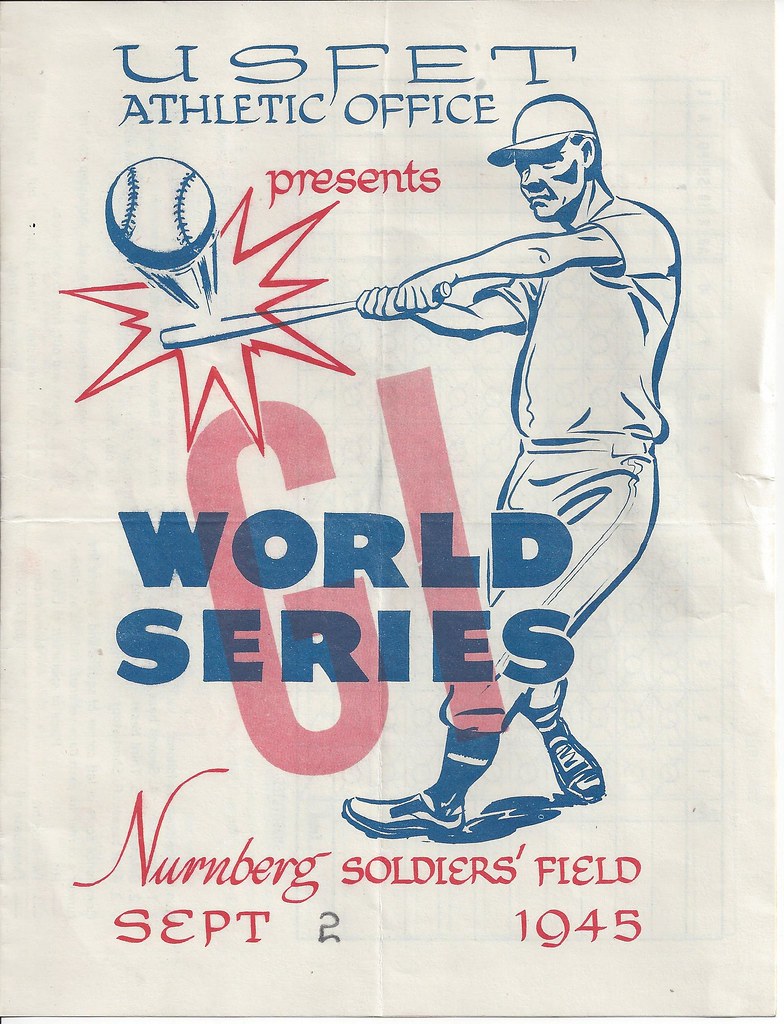

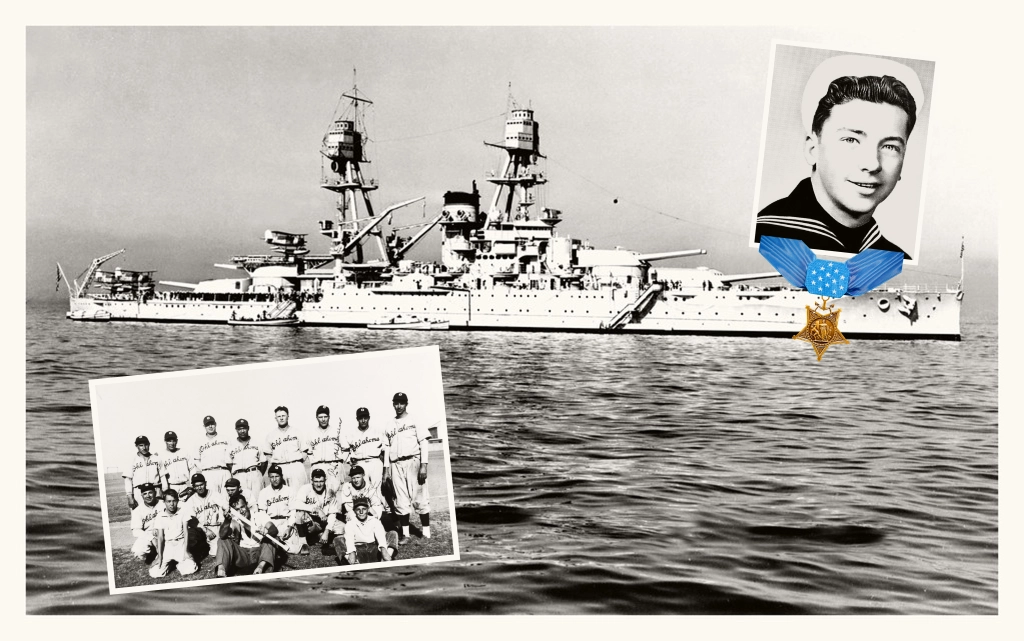

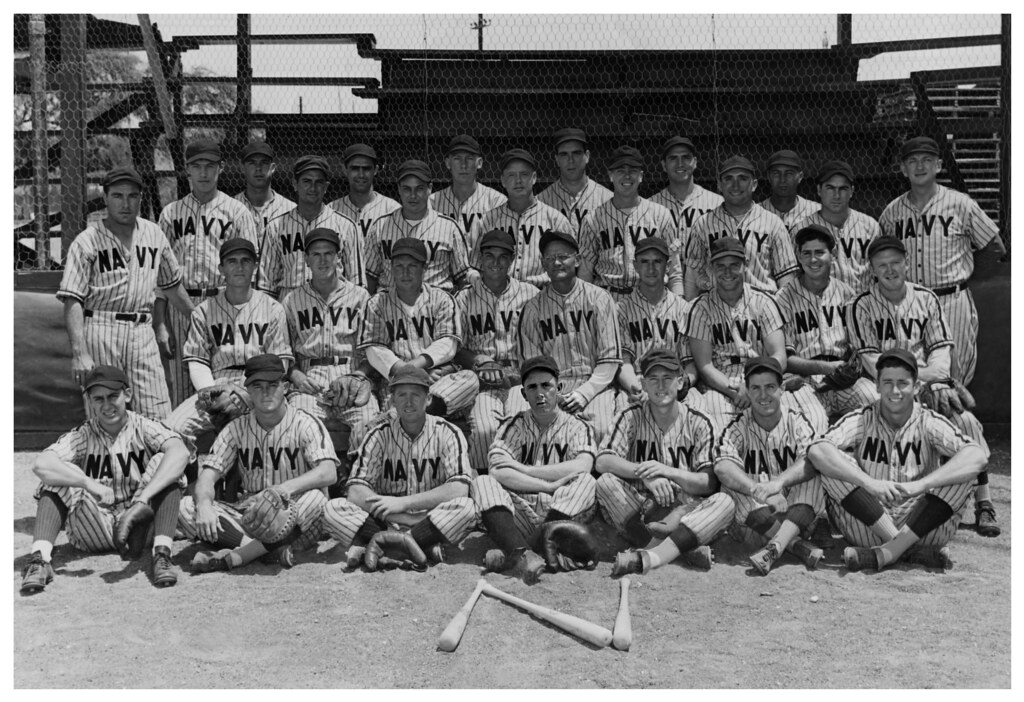
Leave a comment